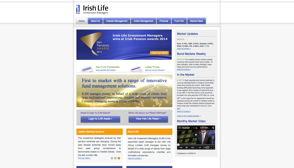Irish Life Health
Welcome to Ireland’s newest health Insurer, Irish Life Health. Bringing fresh options and innovation to the health insurance market.
Irish Life
Irish Life the largest life and pensions group and fund manager in Ireland, employing 2,000 people and servicing one million customers.
Irish Life Investment Managers
Managing assets in excess 39bn, ILIM manages money on behalf of multinational corporations, charities and domestics.
Capital Acquisitions Tax (CAT)
There have been significant changes to the CAT (gift and inheritance tax) legislation over the last number of years, starting with the substantial reduction of the tax free thresholds and an increase in the tax rate to 30% in 2012.
Recently, some of the ‘more popular’ reliefs and exemptions have also been amended to restrict their usefulness. Most notably the relief for agricultural property which was altered to ensure that it can only be availed of by actual ‘farmers’ and, just last year, the Dwelling House exemption was also significantly reduced.
While many suggestions have been made about capping other reliefs in various pre-budget submissions, there has been no further move this year to make additional amendments to the CAT legislation/ reliefs governing how an individual’s gift or inheritance tax liability will be calculated. Indeed the only CAT related change announced in the budget was a broadening of the conditions for agricultural relief to allow agricultural land placed under solar infrastructure to continue to be classified as agricultural land. This change is also to apply for the purposes of Retirement Relief from Capital Gains Tax.
This announcement is part of a package of measures to facilitate the transfer of farms to young farmers, and includes the extension of relief from stamp duty where agricultural land is being transferred to a family member (consanguinity relief).
This ‘lack of change’ means that the valuable reliefs available to life assurance savings and protection contracts, under Section 72 and Section 73 of the CAT legislation, are still available.
Any other asset, when passed to a beneficiary, will only increase the beneficiaries’ gift or inheritance tax liability.
A ‘specifically endorsed’ life assurance savings or protection plan, if used to pay a beneficiaries ‘relevant tax’ (gift or inheritance tax) bill will NOT increase the tax liability.
This is a very important benefit which is only available to life assurance savings and protection plans; so only advisors can bring this solution to members.
Government levy and Exit Tax
There has been no change announced to either the government ‘stamp duty’ of 1% charged on any premiums payable in respect of life assurance protection, savings or investment contracts. Nor have there been changes to the current exit tax rates of 25% for corporate investors and 41% for personal investors.
These charges will therefore continue to apply at the current rates.
Taxation treatment of death benefits payable from protection plans
On a positive note, no change has been announced to the tax treatment of the death benefits payable from life assurance ‘protection’ plans. So no changes to the all-important ‘family protection’ contracts put in place to secure client’s families’ future in the event of an untimely death. Crucially this means there is no change to the taxation treatment of any BUSINESS PROTECTION arrangement put in place to ensure the security and continuation of a business in the event of the death of either a business partner, in the form of a shareholder protection arrangement, or the death of an individual who is key to the business, or on who’s death a loan might need to be repaid, in the form of keyperson cover.
It would seem to be a far more cost efficient option to put in place life assurance protection cover, be it a shareholder protection arrangement, or a keyperson cover arrangement, to ensure the continuity of a business, rather than having to try and borrow from the bank to obtain sufficient funds.
Again, these types of life assurance family and business protection arrangements can only be brought to members by advisors.








